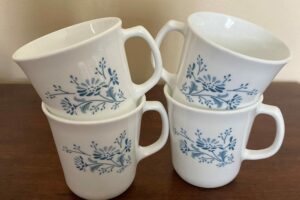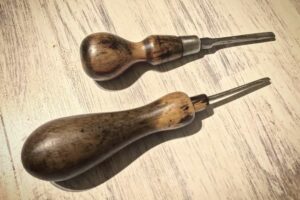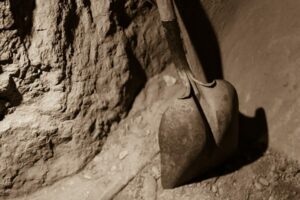Vintage go-karts hold a special place in the hearts of motorsports enthusiasts. These classic machines not only evoke a sense of nostalgia but also provide a glimpse into the history of karting. Whether you’re an avid collector or a go-kart enthusiast looking to learn more about these timeless gems, this Identification and Value Guide will help you navigate the world of vintage go-karts.
The process of identifying and valuing vintage go-karts involves examining various aspects, such as the chassis, materials, and specific features that can provide clues to their age and worth. In this guide, we will delve into these factors and offer expert insights to assist you in uncovering the unique stories behind these karts, as well as understanding their current market value.
From recognizing the tell-tale signs of an antique chassis to investigating the materials used in their construction, this guide will arm you with essential knowledge for your vintage go-kart journey. As you explore the realm of these historic race machines, be prepared to uncover the exciting and ultimately rewarding world of vintage go-kart identification and valuation.
Table of Contents
The History & Evolution of Vintage Go-Karts
The history of go-karts can be traced back to the 1950s. Art Ingels, an American engineer and hotrodder, is credited with creating the first go-kart in 1956. Ingels built his prototype using a small chassis and a lawnmower engine. This initial design sparked interest and led to the rapid development of go-karting as a thrilling recreational activity.
Over the years, go-karts evolved as manufacturers sought to enhance their performance and appeal. Some key innovations and developments in vintage go-karts include:
- 1960s: The introduction of more powerful engine options. Larger, 2-stroke engines became the norm, allowing higher speeds and greater performance on the track.
- 1970s: During this time, go-karts started to be produced with different chassis types, such as the American-style kart with their distinctive straight sidebars and the European-style kart with their more rounded design.
As the popularity of go-karting grew, so did the demand for more advanced models. Companies began to push the boundaries of innovation and started to develop specialized racing karts. This brought new technologies, such as:
- Disc braking systems for better stopping power
- Reed valve engines for improved acceleration and torque
- Adjustable suspension systems for better handling on different track surfaces.
These advancements not only impacted the design of go-karts but also their value. Prices for vintage go-karts can range from a few hundred dollars for basic models to several thousand dollars for rare and collectible models in good condition. Factors influencing the value of a vintage go-kart include:
- Original manufacturer and model
- Engine type and performance capabilities
- Overall condition and authenticity of the kart
- Rarity of the model
In summary, vintage go-karts have come a long way since their humble beginnings in the 1950s. Driven by both recreational interests and competitive racing, the evolution of go-karts has seen the introduction of several key innovations. As a result, the value of these vintage machines varies greatly, with numerous factors contributing to their worth.
Notable Vintage Go-Kart Brands
Fox
Fox was a prominent brand in the vintage go-kart industry, known for its high-quality and reliable karts. These karts were popular during the 1960s and 1970s for their performance and innovative designs.
Rupp
Another well-known brand in the vintage go-kart scene, Rupp produced go-karts from the 1960s to the 1980s. They were often designed with racing in mind and were known for their speed and durability. Many vintage kart enthusiasts still appreciate and seek out Rupp karts for their timeless styles and performance abilities.
Simplex
Simplex was an important player in the go-kart manufacturing industry, contributing to the growth of karting in the United States. They produced karts throughout the 1950s and 1960s, focusing on creating sturdy karts designed for a variety of track conditions. Simplex karts often featured unique designs, which many vintage kart fans appreciate today.
Margay Techno
Another influential brand in vintage go-karting, Margay Techno, produced karts primarily during the 1970s and 1980s. Margay Techno was recognized for its innovative approach to kart design and enjoyed popularity for its technologically advanced models that regularly featured in competitive racing events.
Italian Vintage Karts
Italian Vintage Karts represent a variety of prominent Italian kart manufacturers, including the likes of Tecno, Birel, and CRG. Many of these karts were exported worldwide and played a vital role in popularizing karting across Europe and other continents. Known for their sleek design and innovation, Italian Vintage Karts are highly sought after by kart collectors and enthusiasts.
Kart Engines of Brazil
Brazil has its own rich history in the world of vintage go-karting, with dedicated kart engine manufacturers such as L.S. Engines, KTT, and Mini. These companies produced kart engines tailored for the growing Brazilian kart racing scene, offering a different flavor in the realm of vintage go-kart engines. Today, Brazilian kart engines remain as a unique part of vintage karting’s diverse portfolio.
Identifying Vintage Go-Karts
Model and Frame Numbers
When attempting to identify a vintage go-kart, start by searching for model and frame numbers. These numbers are typically found on the main frame or near the front of the body. If the numbers are visible, they can provide valuable information about the kart’s make, model, and production year. However, if the numbers are missing, it will be necessary to use other methods for identification.
Key Features
Examining specific key features of the kart can help in the identification process. Some common features to look out for include:
- Chassis design: The overall shape, structure, and materials used can vary between kart manufacturers and models.
- Engine type: Vintage karts typically used small two-stroke engines. Different manufacturers had their preferences regarding which engines they equipped their karts with.
- Suspension components: Details such as front and rear suspension setups may offer clues as to the kart’s origin.
- Braking system: Some vintage karts had rudimentary braking systems, while others employed more evolved designs that can aid in identification.
Decals and Seats
While decals and seats may have changed over time, they can still provide useful information. Original decals found on the kart’s body or frame can reveal the manufacturer and model. In case the decals are missing or illegible, looking at contemporary advertisements or vintage catalogs may help in finding similar designs.
Seats are another essential aspect of vintage go-karts. Some manufacturers used unique seat styles or materials that can be indicative of the kart’s origin. For example, early racing karts often had simple seats made of fiberglass or similar materials, while later models used more complex, padded seats.
To summarize, identifying vintage go-karts involves careful examination of model and frame numbers, key features, decals, and seats. It might be necessary to consult additional resources such as vintage catalogs and online forums if the kart’s initial identification is challenging. By paying attention to these details, enthusiasts can successfully pinpoint the make and model of the vintage go-kart and appreciate its historical value.
8 Factors to Identify & Value Vintage Go-Karts
1. Age
The age of a vintage go-kart plays a crucial role in determining its overall value and desirability among collectors. Generally, older go-karts tend to have a higher value than more recent models due to their rarity, historical significance, and nostalgia appeal. Additionally, early go-kart models often showcased unique design elements and innovations that are not found in later models.
In the world of vintage go-kart collecting, specific eras and manufacturers tend to have a higher value. For example, go-karts manufactured by reputable brands such as Rathmann or Bug from the late 1950s and early 1960s are typically more valuable than those produced by lesser-known manufacturers from the same time period.
However, age is not the only factor that affects the value of a vintage go-kart. Condition, rarity of model, and originality also play crucial roles in determining the worth of a piece. Nonetheless, to give an idea of how age can impact the value of a vintage go-kart, here is an example of a valuation table based on different decades of production:
| Decade of Production | Average Valuation |
|---|---|
| 1950s – Early Go-Karts | $1,200 – 1,500 |
| 1960s – First golden age | $800 – 1,100 |
| 1970s – Second golden age | $500 – 700 |
| 1980s – Growing popularity | $300 – 500 |
2. Brand
When identifying and valuing vintage go-karts, examining the brand is a crucial factor. Some of the most popular vintage go-kart brands have a higher demand among collectors, which in turn influences their value. In this section, we will list a few well-known vintage go-kart brands and their average valuations based on demand, rarity, and condition.
| Vintage Go-Kart Brand | Average Valuation |
|---|---|
| A94 (Golf Karts) | $300 – $1,700 |
| Rupp | $500 – $2,000 |
| McCulloch | $400 – $1,500 |
| Fox | $350 – $1,200 |
| Bug | $300 – $1,000 |
When assessing the value of a vintage go-kart, it is important to take note of any additional factors that may impact the overall value. These factors might include the presence of original parts, overall condition, rarity, and any unique modifications or enhancements made by the owner. For example, a vintage go-kart with an alcohol engine or cable brakes might be considered more rare and thus command a higher valuation.
Also, take into account the materials used to construct the go-kart. As with any collectible, the type of material used in the manufacturing of the go-kart can also impact its value. Lift the frames and check the material on its walls, chassis, wheels, and hubs. Vintage go-karts made from premium materials will generally be more valuable.
Lastly, it is essential to research the historical significance and context of the brand. Some manufacturers have a storied past, while others might have limited production runs or be associated with legendary racers and events in the sport’s history. Knowing the narrative behind the brand can make the difference in determining the true value and rarity of a given vintage go-kart.
3. Model
When identifying and valuing vintage go-karts, one crucial factor is the model of the go-kart. Different models can have varying levels of rarity, popularity, and historical significance, which can directly impact the value of the go-kart. Accurate identification of the go-kart model is essential to correctly appraise its value. In this section, we’ll discuss some key factors to consider when identifying go-kart models and how these factors can influence the overall value.
Vintage go-kart models often have unique characteristics, such as the frame design, body shape, and engine type. These features can play a significant role in determining the rarity and historical importance of the kart, consequently affecting its price. As you examine the go-kart, take note of any unique features that may distinguish it from other models.
Another useful source of information for identifying go-kart models can be found in the form of serial numbers, often stamped on the chassis, spindle hanger, or near the front of the body. These serial numbers can help you accurately determine the model, production year, and sometimes even additional details about the kart.
Here is an example of a valuation table for vintage go-kart models, highlighting the average prices according to different model characteristics:
| Model Characteristics | Average Valuation |
|---|---|
| Small chassis, alcohol engine, cable brakes | $300 – 500 |
| Mid-size chassis, gas engine, hydraulic brakes | $600 – 1000 |
| Large chassis, high-performance engine, disc brakes | $1200 – 2000 |
| Custom racing kart, limited edition model | $2500 – 4000 |
4. Materials
When identifying vintage go-karts, materials play a crucial role in determining both their age and value. Over the years, go-kart materials have evolved, and understanding these changes can help collectors and enthusiasts recognize specific periods or manufacturers.
In the early days of go-karts, frames were often made from lightweight aluminum alloy materials, such as duralumin. Few models like the 1961 Rathmann Xterminator are well-known examples of such early go-karts. However, as technology improved, manufacturers started using tubular steel for their frames, making the karts more robust and durable.
Wheels and hubs are also important components to consider when assessing a vintage go-kart’s materials. Early models typically came with wheels made from magnesium or aluminum, while more recent designs opted for steel or even plastic hubs.
To facilitate organized valuation, below is a table showcasing the average valuation for vintage go-karts based on their materials:
| Go-Kart Material | Average Valuation |
|---|---|
| Aluminum Frame | $600 – $800 |
| Steel Frame | $400 – $600 |
| Magnesium Wheels | $300 – $500 |
| Aluminum Wheels | $200 – $400 |
| Steel/Plastic Hubs | $100 – $200 |
These valuations can vary depending on factors such as the go-kart’s condition, maker, and rarity. Nonetheless, understanding the role materials play in a vintage go-kart’s overall value will enable collectors to better appreciate their collection and make informed decisions when purchasing new items.
5. Styles
Vintage go-karts come in various styles, with each style potentially having a significant influence on its value. Some common styles include the early historic karts, production-built karts, and custom-designed karts.
Historic Karts (1956-1963)
These early karts were typically handcrafted by their owners and usually featured minimalist designs without the extensive customization or additional amenities seen in later years. Due to their rarity and historical significance, these early karts can often hold a higher price in the valuation.
Production-Built Karts
As go-karts became more popular, manufacturers began producing standardized models. These production-built karts can vary greatly in style and amenities, such as hand brakes vs. foot brakes, steering wheel vs. steering grips, and more. The value of these karts will largely depend on the specific features and the popularity of the model.
Custom-Designed Karts
Some enthusiasts build their own custom go-karts, featuring unique designs and features tailored to their individual preferences. The value of these karts can be harder to determine, as they may not have a direct comparison in the market.
6. Braking System
The braking system of a vintage go-kart is a crucial factor when determining its value and desirability among collectors. Older go-karts were typically equipped with different types of brakes, each having a unique impact on their overall value. In this section, we will discuss the various braking systems found in vintage go-karts and how they affect their valuation.
Types of Braking Systems
There are several types of braking systems that were used in vintage go-karts, including:
- Scrub brakes
- Band brakes
- Drum brakes
- Disc brakes
Each of these braking systems has its advantages and disadvantages, and thus, can influence the value of the go-kart in question.
Impact on Value
The braking system of a vintage go-kart has a significant impact on the overall value of the kart. Below is a table showcasing the average valuation of vintage go-karts based on their braking system:
| Braking System | Average Valuation |
|---|---|
| Scrub brakes | $250 – 350 |
| Band brakes | $350 – 450 |
| Drum brakes | $450 – 550 |
| Disc brakes | $550 – 700 |
Scrub brakes, being the simplest and least effective type of braking system, tend to lower the value of a vintage go-kart. However, their simplicity may have a nostalgic appeal to some collectors. Band brakes and drum brakes are more effective than scrub brakes, but they are less efficient than disc brakes. As a result, go-karts with these braking systems tend to have a moderate value. Disc brakes, being the most efficient and modern type of braking system, add more value to vintage go-karts and are highly sought after by collectors.
It is essential for collectors to carefully inspect the braking system of a vintage go-kart to accurately determine its value. Proper functioning, maintenance, and originality of the braking components can also play a critical role in the go-kart’s appraisal.
7. Completeness
The completeness of a vintage go-kart is an essential factor when appraising its value. This could take into account the functionality, originality, and overall condition of the go-kart. Focusing on the impact of the completeness on the value, some factors that affect the appraisal include:
- Presence of all original parts
- Functionality of engine and other components
- Cosmetic condition of the kart
To help illustrate the impact of completeness on the value of vintage go-karts, here is a valuation table with different levels of completeness alongside their associated average valuations.
| Completeness Level | Average Valuation |
|---|---|
| Complete & Fully Functional | $1000 – 1200 |
| Complete & Partially Functional | $800 – 1000 |
| Incomplete & Fully Functional | $600 – 800 |
| Incomplete & Partially Functional | $400 – 600 |
| Bare Frame & No Engine or Additional Parts | $200 – 400 |
As shown in the table, a complete and fully functional vintage go-kart has a significantly higher valuation than one that is incomplete or lacking functionality. A collector’s understanding of these various factors will enable them to make informed decisions when assessing the value of vintage go-karts, ensuring their collection remains of as high a value as possible.
Final Thoughts
Identifying and valuing vintage go-karts can be a rewarding experience for collectors and enthusiasts alike. By being mindful of crucial indicators, one can easily determine the make and model of a vintage go-kart.
Materials play a significant role in identifying vintage go-karts. Examining the frames, wheels, and hubs for specific materials can help narrow down the manufacturing period. Vintage go-karts typically feature alcohol engines or cable brakes, which can also offer insight into the kart’s age. Furthermore, forums dedicated to vintage kart identification, such as the Vintage Karting Forum, offer valuable resources to learn and compare with other enthusiasts.
The brand and model of a go-kart can often be found near the front of the body or on the side of the main frame. Keep in mind that decals can sometimes be lost or removed, so having alternative methods of identification at hand is essential.
Remembering these key points will make identifying vintage go-karts less daunting and set you on the right course for building an impressive and authentic collection.
FAQ
Q: How can I identify my vintage go-kart?
A: Begin by checking the chassis for alcohol engines or cable brakes, which are indicators of older models. Then, lift the frames and examine the materials used on the walls, chassis, wheels, and hubs. Go-kart models might also be found on the main frame or near the front of the body.
Q: What materials are common in vintage go-karts?
A: Vintage go-karts may have a combination of materials, including steel, aluminum, and fiberglass. The specific materials used will depend on the kart’s age, make, and model. Steel was commonly used on older karts before being replaced by lighter materials like aluminum and fiberglass.
Q: How do I determine the value of a vintage go-kart?
A: The value of a vintage go-kart can range from $300 to $1,700, depending on factors such as condition, rarity, model, and age. Some helpful tips for assessing the value of your kart include:
- Comparing your kart to similar models on classified ads, websites, or forums.
- Seeking advice from experienced collectors, vintage karting communities, or hobby shops.
- Taking into account any restoration or replacement work required to restore the kart to its original condition.
Q: Are there any dedicated websites or forums for vintage kart identification?
A: Yes. Websites like the Vintage Karting Forum are a great resource to identify and discuss various vintage karts. These forums often have dedicated sections for kart identification and may even include sub-forums divided by the specific brand, model, or manufacturing country.
Q: How can I preserve and maintain my vintage go-kart?
A: Proper storage, regular maintenance, and appropriate cleaning are essential to keeping your vintage go-kart in good condition. Some key tips include:
- Storing your kart in a dry, temperature-controlled environment to prevent rust and other damage.
- Regularly inspecting and maintaining critical components like the engine, brakes, and suspension.
- Cleaning your kart with appropriate tools and materials, avoiding harsh chemicals or abrasive tools that could damage the kart.









